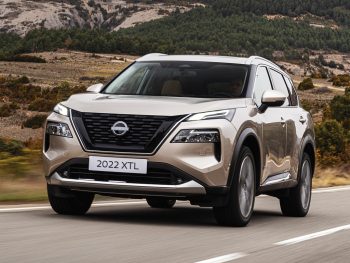Road Test: Nissan X-Trail e-Power
The big seven-seat crossover has been electrified. John Challen ponders whether it’s a winning combination.

Nissan X-Trail e-Power
It’s easy to underestimate or not appreciate how important a model the X-Trail has been to Nissan. Since the original car was launched in 2001, it has amassed nearly eight million global sales – three million of which have been from the outgoing car. In UK terms, the Japanese manufacturer has contributed with close to 140,000 sales – almost 50% of all those sold in Western Europe.
So getting this one – the fourth-generation X-Trail – right, was an important task. To Nissan, it was a case of combining all of the best elements from previous generations, while simultaneously preparing for an electric future. For the latter point, Nissan has deployed its e-Power technology seen on the Qashqai last year. Essentially, the system uses a powertrain setup that comprises a high-performance battery, variable compression ratio petrol engine, power generator, inverter and 150kW electric motor. The result is a system that sends power to the wheels directly from the electric motor to replicate the instant and linear power delivery of an EV.
Nissan has previously stated that the e-Power approach acts as a ‘stepping stone’ to pure electric vehicles. In doing so, it brings EV characteristics to the market, but in a package where drivers don’t need to worry about range anxiety or recharging. And, on first showing, its execution on the X-Trail is a success. The big Nissan drives well, offers minimal cabin noise and rides comfortably over a range of surfaces. At the same time, claimed fuel economy of 38.5 and 48.6mpg is to be applauded.
Thanks to e-Power, the new X-Trail is the only electrified seven-seater in the segment, although the standard five-seat version will likely be the dominant model in the UK. While the seven-seater is offering something unique in the large crossover market, adults may struggle to travel any big distances in the third row. Understandably, it’s quite cramped back there, but we did squeeze in and could still return the second row of seats to their usual upright position. There is also the issue of luggage room being depleted when travelling with a full car load, but small bags can still be accommodated.
The X-Trail offers a mix of quality and ‘go anywhere’ functionality. There are 2WD and 4WD options for the car – which shares its platform with the Qashqai – and improvements to the steering and suspension have been made for sharper handling. The 4WD system – the interestingly titled ‘e-4orce’ – is new for electrified vehicles and Nissan has revealed it will feature on the Ariya this year. By managing power output and braking performance for each individual wheel, stability improvements are made. Certainly on the sections we drove on tougher terrain, the X-Trail was very capable and assured.
Quality levels in all of the X-Trail models have also been upgraded over the outgoing model, with even the entry-level Visia offering impressive safety technology and infotainment. In total, there are five grades – joining Visia are Acenta Premium, N-Connecta, Tekna and the range-topping Tekna+, which starts from £42,520.
IN BRIEF
WHAT IS IT? Large crossover
HOW MUCH? From £32,030
ECONOMY? 38.5-48.6mpg
EMISSIONS? 132-167g/km
Key fleet model: Acenta Premium e-4orce
Pro’s: RVs; low-speed refinement; seven seats
Cons: Limited third-row space; engine noise
7-word summary: Upgrades all round in an impressive package
Also consider: Hyundai Sante Fe / Kia Sorento / Toyota Highlander












